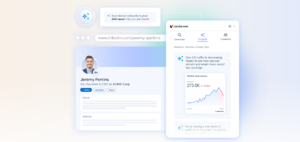New Digital Age meets Dmitry Sverdlik, CEO and founder of Xenoss, to discuss cost-efficient approaches to building AdTech solutions in the current recessionary climate.
As companies learn to adapt to an uncertain global economy, how can AdTech companies implement more cost-efficient solutions?
For AdTech companies, technology-related expenses are considered integral to their unit economics: they impact the cost of providing services or selling products on a per-customer level. Taking a broader perspective, technology spend influences the profitability of such businesses. The higher the technology bill, the less profit the company can make as it scales, to the point of bringing it under if the business doesn’t keep these expenses costs well under control.
Based on the results of Xenoss’s projects, I can say that AdTech businesses can cut operating costs by first optimizing their infrastructure rather than resorting to extreme measures like budget cuts and staff layoffs. We have seen many examples. For instance, a company that struggled with skyrocketing AWS costs of maintaining its custom demand-side platform (DSP) reached out to us for help. During the first year since the launch, they had spent up to $500,000; four years later, the bill had grown five-fold. Overall, the client’s five-year tech spending topped $6 million. Our team evaluated whether the solution’s infrastructure matched its requirements (it didn’t) and optimized a tech stack and architecture to make a platform cost-efficient and scalable. Eventually, we brought annual costs down from $2.5 m to $144,000.
So what sort of changes can/should Ad Tech companies make to their infrastructure to reduce their operating costs?
AdTech companies should set up a thorough technical audit of their cloud infrastructure. The first thing to do is reconsider the business’s dependency on managed cloud services. Companies that delegate the management of cloud-based resources and services won’t be able to optimize or configure data infrastructure to ensure the product keeps up with the increasing workload. They buy into the ecosystem that upcharges them as they scale and miss the opportunity to extend their in-house expertise and increase the flexibility of their platform. So my advice is to start managing one’s own infrastructure and replace managed cloud services with self-service ones.
When you pay per request to a database with services like Amazon RDS or Google BigQuery, these cents add up significantly as your business scales. Switching from cloud services that bill on a per-query basis is another way to cut expenses on infrastructure. In our projects, we mainly use ClickHouse or Aerospike.
AdTech companies can also re-engineer architecture to ensure the system works efficiently in real-time while consuming less CPU and memory. I’m talking about replacements in the tech stack and the data model. For example, Xenoss specialists changed a back-end codebase from Node.js to Java and substituted MongoBD with Aerospike in the DSP I mentioned before. On top of that, they implemented K-D indexing for scalable in-memory search.
Finally, reorganizing data pipelines to eliminate any redundancies in data transfer and access can also help reduce costs.
Are there any common mistakes you see ad tech companies making when building and growing their business? Can they be avoided?
There are plenty of common mistakes, but the most serious is assuming that adopting managed cloud services is more financially profitable in the long run than hiring developers experienced in building, maintaining and optimizing high-load applications. Another bias, the free money trap as we call it, is about ignoring the system’s computing resource consumption and infrastructure costs while using free cloud credits. Those taking cloud credits as a gift and not monitoring and estimating current and future spending may not handle bills when credits expire.
Of course, you can avoid these mistakes by growing in-house engineering talent and selecting optimal tech stack and architecture with flexible optimization options from the outset. But it’s never too late to turn things around. In fact, given the current economic uncertainties the industry faces, I’d say now is the perfect time.
How to choose the right infrastructure and tech stack?
Factor into the equation your budget, the amount of data you expect your solution to process, DevOps expertise, and your performance requirements. You’ll need to upload huge chunks of data, tweak indexes and compression, and see how the application operates. It’s only possible to make the best architectural decisions by experimenting.
If your internal team needs an outside opinion, you can rely on a tech partner to pick the most suitable technologies for your solution’s requirements. A tech partner can complement in-house engineering talent or overtake development if needed. Regardless of the scenario, the team will gain more knowledge in engineering high-load systems, and the business will get a scalable AdTech solution that won’t squeeze your margins with infrastructure costs.









